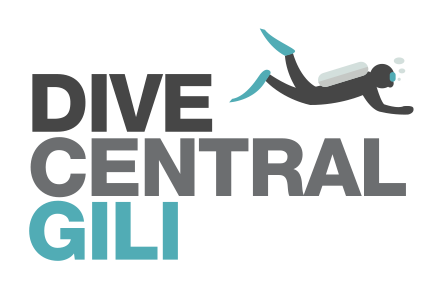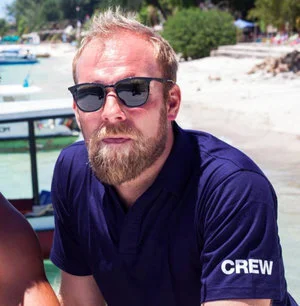Coral Propagation on the Gili Islands with Ocean Quest & Sea Shepherd
Here at Dive Central Gili, we can’t stress the importance of the health of our reefs enough. Many of you may know the existence of our ‘housereef’ the Biorocks. Stretching from the jetty to the south tip of the island this enormous effort for coral conservation inspired the team to do more!
In this blog we are talking to DCG’s manager Steve Willard and ask him about their own Coral Garden and what inspired him to propagate his own corals.
DCG’s Manager “Scuba” Steve Willard
When and why did you start your own coral garden?
“We have started our own coral garden where we don't only rely on the Biorock structures to help the environment but we have started to do our own propagation of corals.
This has been an on going project since early July when I completed my course with Sea Shepherd and Ocean Quest. Since then I got the whole DCG team more involved in increasing the health of the corals and explain what that can mean for the environment. The great thing about coral gardening is that there is no need for any man made products to enter the water and this is one of the main reasons that Sea Shepherd have sponsored this course. We’ve figured out it would be a good idea to keep the garden at 5-6 meters just outside of the dive shop, this has allowed our team to look after the garden easily.”
One of the first fragmented table corals Steve planted in July 2018, photo taken May 2020
What does it mean to coral garden?
“Just like any garden above sea level, it needs love and attention to grow well. The team head out either on scuba or via snorkelling to check on the garden weekly to make sure there are no algae growth on the tiny corals and also check for parasites like the drupella.
Coral reefs are home to nearly 70% of all the marine life in the ocean, this is why we think that this course is such a fantastic way to not only learn more about the underwater world but also, give back and help grow our own corals and see them progress.
Part of the course is to help put back some of the dead limestone skeletons that end up on the beach. We collect these skeletons in baskets and the get the help of the boats to bring them out so we can carefully put them back into the ocean and make a bed for the small coral fragments to grow on. Once the white skeletons have been in the ocean for up to a month and turned into what we call substrate or living rock we can start to add the coral fragments.“
Drupella found on the Coral Garden
The drupella is a sea snail, feeding on the tissue of hard corals
How does the Coral Propagation Course work, and what do I learn?
“There are two parts to this course, the first part is a simple introduction to what a coral is, what we can do to help them and how we work together on growing the corals. This only takes half a day and can be completed with or without a scuba diving certification.
The other course will be run over two to three days and does require the student to have a dive certification. The course goes into more details of different corals and the jobs and stressors that cause corals to either disease or die. They look at adding to the garden and also help propagate fragmented corals on to substrate.”
Want to know more about this course or about our coral garden? Send us a message and we’ll be happy to teach you some gardening! :)




